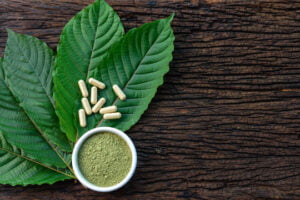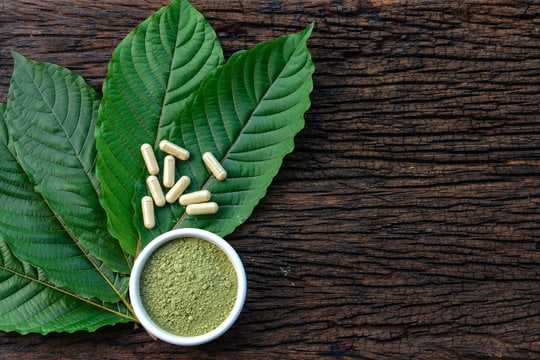
Free Standard Shipping on orders over $49 and Priority on orders over $100! Dismiss
Skip to contentIntroduction:
Kratom’s burgeoning popularity stems from its diverse applications in wellness routines, drawing attention from individuals seeking natural alternatives to support their health. However, before delving into its usage, it’s imperative to grasp the fundamentals of kratom to navigate its complexities safely and effectively.
What is Kratom?
Kratom, scientifically known as Mitragyna speciosa, is a tropical evergreen tree native to Southeast Asia. For centuries, indigenous communities have revered kratom for its medicinal properties, utilizing its leaves in traditional remedies to alleviate pain, boost energy, and enhance overall well-being. Its rich cultural significance and historical use underscore its value as a botanical supplement.
Different Types of Kratom Strains
Kratom strains are classified based on vein color, with red, green, and white being the most common variants. Each vein color exhibits distinct characteristics and effects, catering to diverse preferences and needs. Popular strains like Red Bali, Green Maeng Da, and White Borneo offer unique experiences, making it essential for users to understand their individual profiles.
How to Choose the Right Strain
Selecting the appropriate kratom strain entails considering various factors such as desired effects and personal tolerance levels. By tailoring their choice to specific needs and preferences, users can optimize their kratom experience for maximum benefit. Experimentation is key to finding the ideal strain that resonates with individual requirements.
Dosage Guidelines
Determining the correct kratom dosage is paramount for a safe and enjoyable experience. Beginners should start with low doses and gradually titrate upwards to gauge their tolerance levels. Factors like body weight and prior exposure to kratom influence dosage requirements, necessitating careful consideration to prevent adverse reactions.
Below is a chart outlining various kratom strains, categorized by vein color, and their associated effects on energy, mood, pain relief, stimulation, sedation, and relaxation:
| Kratom Strain | Vein Color | Energy | Mood | Pain Relief | Stimulation | Sedation | Relaxation |
|---|---|---|---|---|---|---|---|
| Maeng Da | White | High | Elevated | Moderate | High | Low | Low |
| Green | Moderate | Elevated | High | High | Low | Low | |
| Red | Low | Elevated | High | Moderate | Moderate | High | |
| Bali | Red | Low | Elevated | High | Low | High | High |
| Green | Moderate | Elevated | Moderate | Moderate | Low | Moderate | |
| White | High | Elevated | Low | High | Low | Low | |
| Sumatra | Red | Low | Elevated | High | Low | High | High |
| Green | Moderate | Elevated | Moderate | Low | Moderate | Moderate | |
| White | High | Elevated | Low | High | Low | Low | |
| Indo | Red | Low | Elevated | High | Low | High | High |
| Green | Moderate | Elevated | Moderate | Low | Moderate | Moderate | |
| White | High | Elevated | Low | High | Low | Low | |
| Thai | Red | Low | Elevated | High | High | Low | Low |
| Green | Moderate | Elevated | Moderate | High | Low | Low | |
| White | High | Elevated | Low | High | Low | Low | |
| Malay | Red | Low | Elevated | High | Moderate | Moderate | High |
| Green | Moderate | Elevated | Moderate | Moderate | Low | Moderate | |
| White | High | Elevated | Low | High | Low | Low | |
| Borneo | Red | Low | Elevated | High | Moderate | High | High |
| Green | Moderate | Elevated | Moderate | Moderate | Low | Moderate | |
| White | High | Elevated | Low | High | Low | Low |
Please note that individual experiences with kratom can vary, and these effects are based on anecdotal reports from users. It’s essential to start with low doses and assess personal tolerance and sensitivity when experimenting with different kratom strains. Additionally, kratom’s effects can be influenced by factors such as dosage, individual biochemistry, and the quality of the product. Always consult with a healthcare professional before using kratom, especially if you have any underlying health conditions or are taking medications.
Safety Tips
Practicing safe kratom usage involves adhering to precautionary measures to mitigate potential risks and adverse effects. Users should be vigilant about avoiding interactions with medications or substances that may potentiate undesirable outcomes. Regular monitoring of tolerance levels and recognition of signs indicating dependence or misuse are essential for maintaining responsible kratom use.
Conclusion
In conclusion, this beginner’s guide to kratom offers a comprehensive overview of its fundamentals and usage considerations. By approaching kratom with awareness and responsibility, users can harness its potential benefits while minimizing associated risks. Stay tuned for more informative content on kratom-related topics as we continue to explore its intricacies and applications.


Twenty years from now you will be more disappointed by the things that you didn’t do than by the ones you did do.
- Mark Twain Tweet


Disclaimer: The content provided on KratomGala.com is for informational purposes only and does not constitute medical advice. The products listed on our site have not been evaluated or approved by the Food and Drug Administration (FDA). They are not intended to diagnose, treat, cure, or prevent any disease or medical condition. The effectiveness of these products has not been confirmed by FDA-approved research. We strongly advise consulting with a healthcare professional before using any product, especially if you have pre-existing health conditions or concerns. These products are intended for use only as botanical specimens and are not for sale or use by individuals under the age of 21. Kratom, particularly the compounds Mitragynine and 7-Hydroxymitragynine, may interact with brain receptors similarly to opioids, which could potentially lead to habit formation, dependency, and withdrawal symptoms. Please use responsibly and adhere to the manufacturer’s guidelines.
Kratom & 7-Hydroxymitragynine: Products containing Kratom or 7-Hydroxymitragynine are not for sale or use by individuals under the age of 18, or 21 where applicable. Certain states and localities have specific restrictions or bans on Kratom and 7-Hydroxymitragynine, including but not limited to ALABAMA, ARKANSAS, INDIANA, RHODE ISLAND, VERMONT, FLORIDA, and several counties within various states. We do not ship internationally, and we do not ship to military bases. ID verification is required for certain states, including Virginia, and West Virginia. It is your responsibility to understand and comply with your local laws regarding the purchase and use of these products. KratomGala.com and its affiliates assume no responsibility for the improper use of any product sold through this site.

Only the following methods are backed by a Money-Back Guarantee (per carrier terms):
All other methods are estimates only and not guaranteed.
Delivery estimates are based on business days (Mon–Fri) and exclude Saturdays, Sundays, and holidays.
Orders placed on Friday with overnight express shipping will not deliver on Saturday.
Cut-Off Times:
Mon–Fri: Orders before 2 PM ship same day
Saturday: Orders before 12 PM ship same day
(Orders after these times may ship the next business day.)
We strive to ship all orders promptly, but same-day processing is not guaranteed.